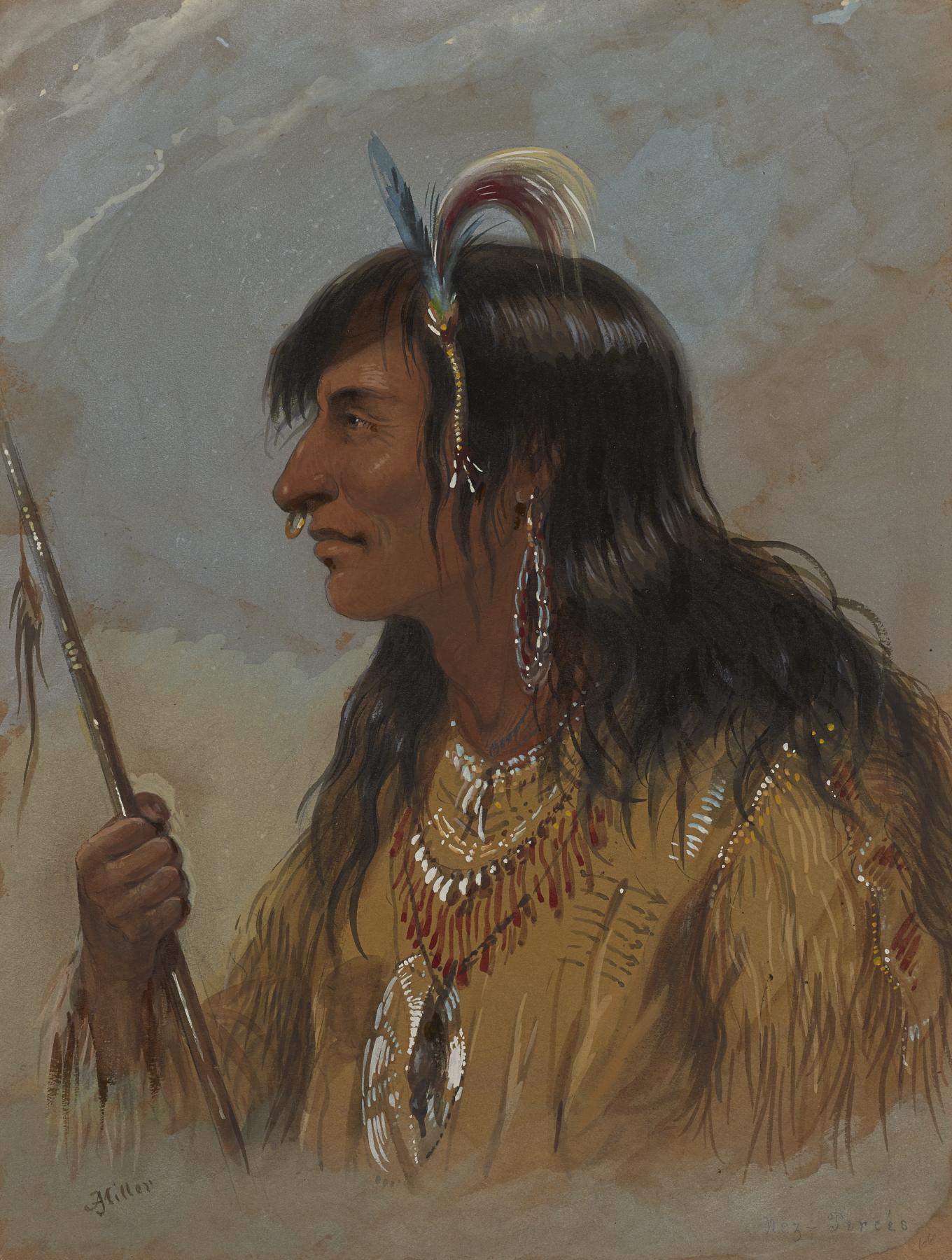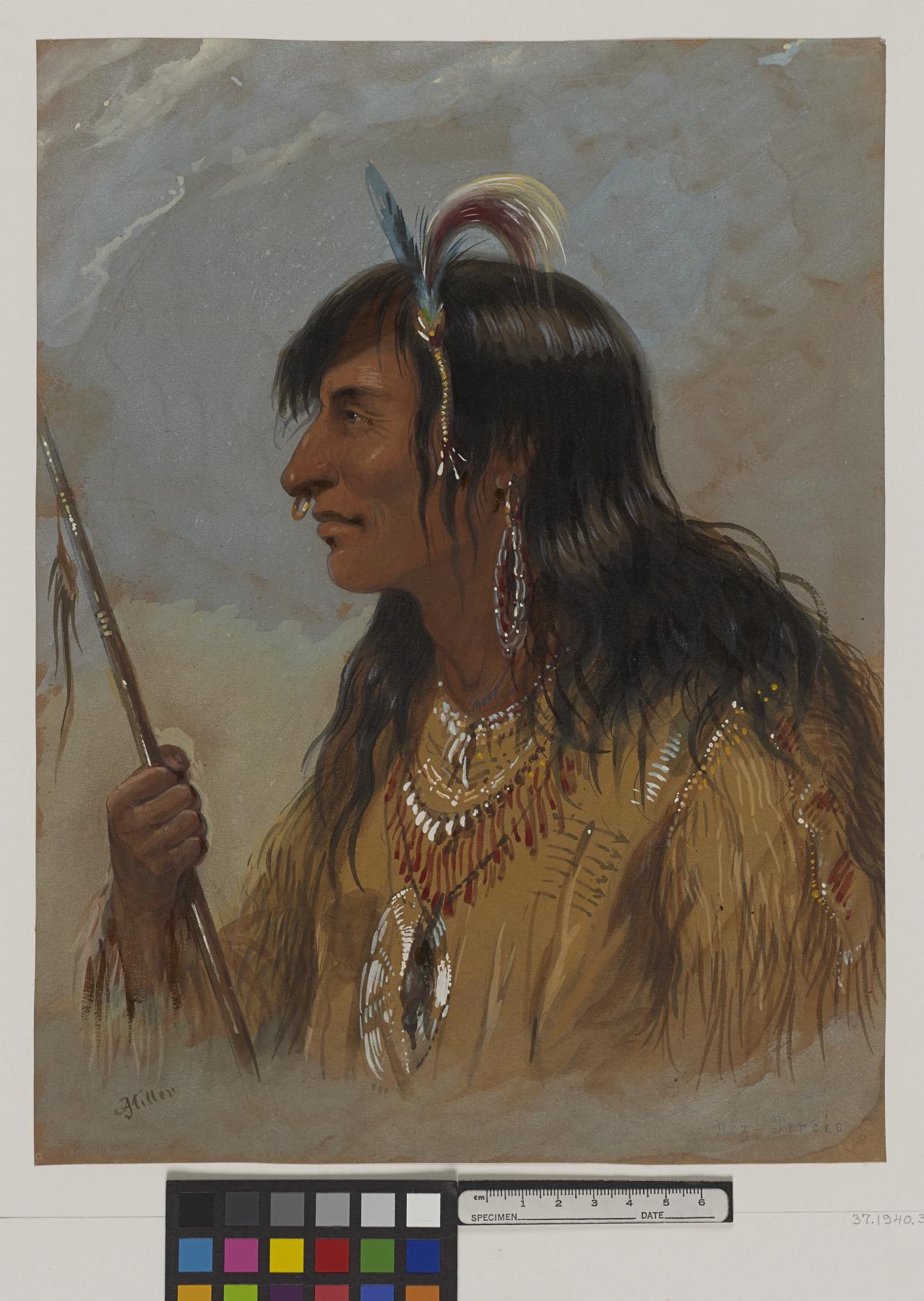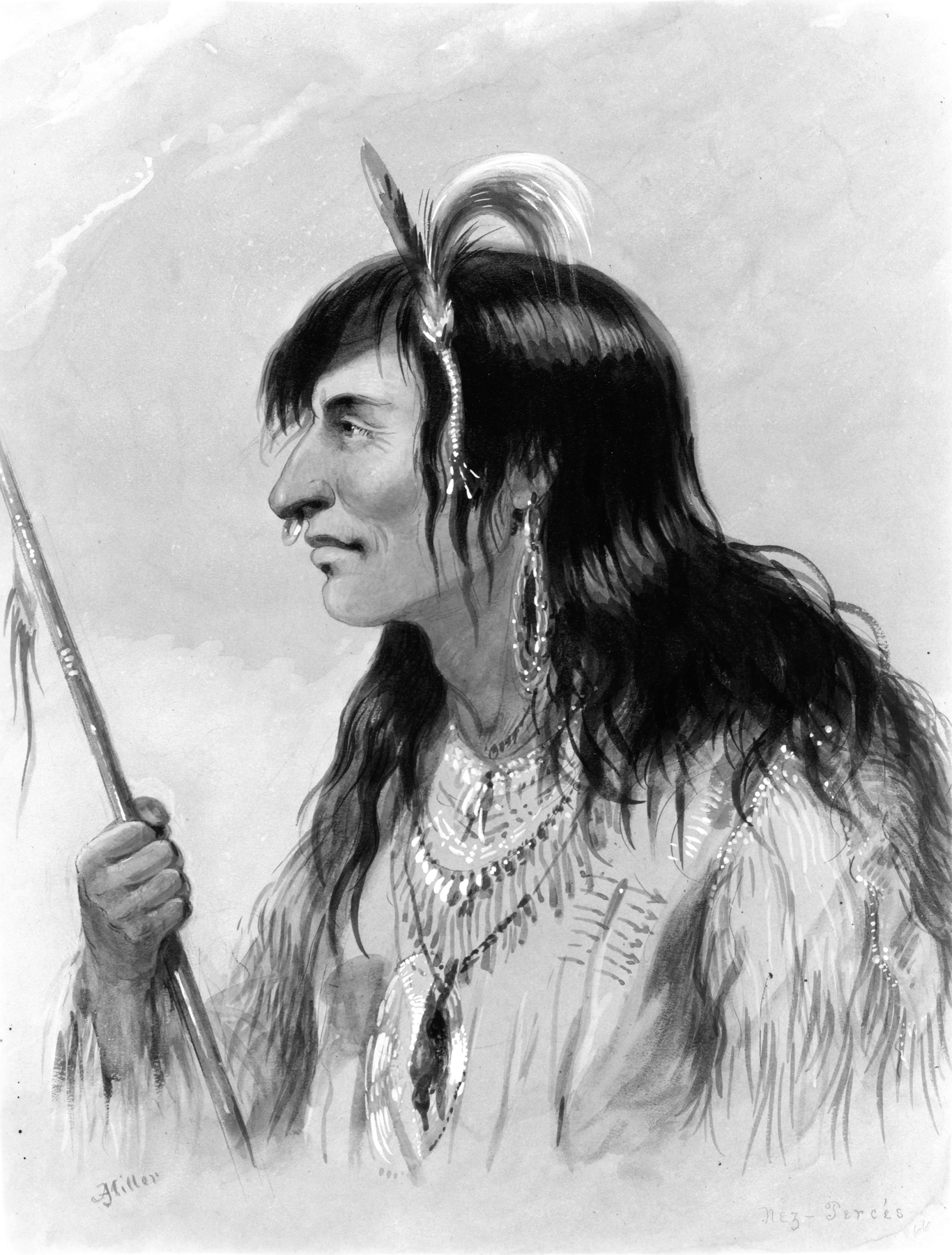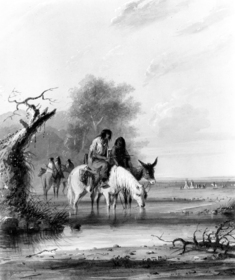Nez Percés Indian
(18th and 19th Centuries )
Extracts from Alfred Jacob Miller’s original text, which accompanied his images of Native Americans, are included below for reference. These words, which shaped how Miller’s contemporaries viewed the watercolors, reveal the racism and sexism embedded in 19th-century exploration and colonization of the western part of what is today the United States.
"These Indians," wrote Miller, "are anti-belligerent, and have some other qualities that are rare and commendable; they are said to be religious, and honest and truthful in their intercourse with the whites. Their observance of religious ceremonies and rites are uniform and remarkable."
Many Indians from the middle Columbia River area pierced their nose and wore rings or thin dentalium shells in their septums. That is the trait for which the Nez Perces are historically named, and this Miller portrait is one of the earlier documents that shows a ring "thrust through" the brave's nose.
In July 1858 William T. Walters commissioned 200 watercolors at twelve dollars apiece from Baltimore born artist Alfred Jacob Miller. These paintings were each accompanied by a descriptive text, and were delivered in installments over the next twenty-one months and ultimately were bound in three albums. Transcriptions of field-sketches drawn during the 1837 expedition that Miller had undertaken to the annual fur-trader's rendezvous in the Green River Valley (in what is now western Wyoming), these watercolors are a unique record of the closing years of the western fur trade.
Provenance
Provenance (from the French provenir, 'to come from/forth') is the chronology of the ownership, custody, or location of a historical object.
William T. Walters, Baltimore, 1858-1860, by commission; Henry Walters, Baltimore, 1894, by inheritance; Walters Art Museum, 1931, by bequest.
Exhibitions
| 2006 | Alfred Jacob Miller and the Western Indians. The Walters Art Museum, Baltimore. |
| 1988 | Alfred Jacob Miller: Maryland and the West. The Walters Art Gallery, Baltimore; Washington College, Chestertown; Frostburg State University, Frostburg; Jewish Community Center of Greater Washington, Rockville. |
| 1981-1982 | Alfred Jacob Miller: An Artist on the Oregon Trail. The Walters Art Gallery, Baltimore; Amon Carter Museum, Fort Worth; Buffalo Bill Historical Center, Cody. |
Conservation
| Date | Description | Narrative |
|---|---|---|
| 8/19/1981 | Examination | examined for condition |
| 8/26/1981 | Treatment | cleaned; mounted |
Geographies
USA (Place of Origin)
Measurements
H: 12 9/16 x W: 9 7/16 in. (31.9 x 24 cm)
Credit Line
Commissioned by William T. Walters, 1858-1860
Location in Museum
Not on view
Accession Number
In libraries, galleries, museums, and archives, an accession number is a unique identifier assigned to each object in the collection.
In libraries, galleries, museums, and archives, an accession number is a unique identifier assigned to each object in the collection.
37.1940.33







